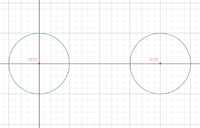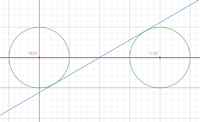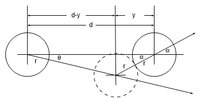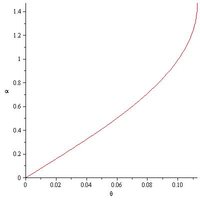Hello. Thanks for having this forum. I'm long out of school, but I'd still like to know how to find the angles shown in my diagram. This has to do with billiard balls, but since the game is played on a single plane, it would work for 2D circles such as those shown. If I know the diameter or radius of the equal-size circles, then as distance changes between their centers, how can I determine how the angle range changes?
Shown in the diagram is a white cue ball below a shaded object ball. The crossed lines show the extreme outside points on the circles' surfaces where they would contact during collision. The vectors passing through the centers of the object balls are the post collision paths (perpendicular to the crossed lines) that the object balls would take for those contact points.
Essentially, the closer the balls are to one another, the smaller the angle range.
Does anyone know a formula to determine angles such as A, B or C in the diagram?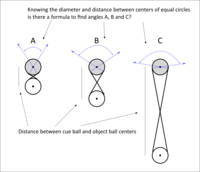
Shown in the diagram is a white cue ball below a shaded object ball. The crossed lines show the extreme outside points on the circles' surfaces where they would contact during collision. The vectors passing through the centers of the object balls are the post collision paths (perpendicular to the crossed lines) that the object balls would take for those contact points.
Essentially, the closer the balls are to one another, the smaller the angle range.
Does anyone know a formula to determine angles such as A, B or C in the diagram?


